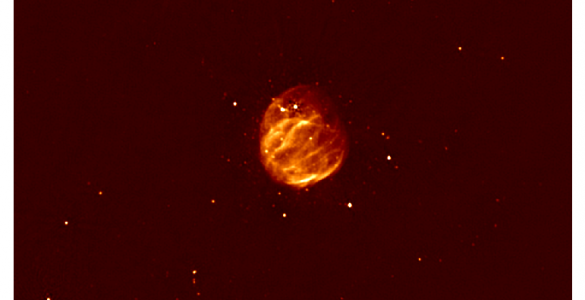Latest NRAO News
News is managed by NRAO News & Public Information. Questions about News? Have a story to share? Want to interview a scientist or create new media about our telescopes?

Spectacular jets powered by the gravitational energy of a supermassive black hole in the core of the elliptical galaxy Hercules A illustrate the combined imaging power of two of astronomy’s cutting-edge tools, the Hubble Space Telescope’s Wide Field Camera 3, and the recently upgraded Very Large Array radio telescope in west-central New Mexico.

An unexpected discovery by astronomers using the National Science Foundation’s Very Large Array is forcing scientists to rethink their understanding of the environment in globular star clusters, tight-knit collections containing hundreds of thousands of stars.

Astronomers and officials from around the globe gathered on the high desert of New Mexico Saturday to officially bestow a new name on the world’s most famous radio telescope and to mark its transformation into a new and vastly more powerful tool for science.

Two new and powerful research tools are helping astronomers gain key insights needed to transform our understanding of important processes across the breadth of astrophysics.

The world’s most famous radio telescope will become the Karl G Jansky Very Large Array to honor the founder of radio astronomy, the study of the Universe via radio waves naturally emitted by objects in space.

The most famous radio telescope in the world is about to get a new name. The Very Large Array, known around the world, isn’t what it used to be. The iconic radio telescope, known around the world through movies, documentaries, music videos, newspaper and magazine articles, advertisements, textbooks, and thousands of scientific papers, is nearing the completion of an amazing transformation.

A galaxy with a combination of characteristics never seen before is giving astronomers a tantalizing peek at processes they believe played key roles in the growth of galaxies and clusters of galaxies early in the history of the Universe.

A new and uniquely powerful tool for cutting-edge science is emerging on the crisp, high desert of western New Mexico.

The surprising discovery of a supermassive black hole in a small nearby galaxy has given astronomers a tantalizing look at how black holes and galaxies may have grown in the early history of the Universe.

Seeking to detect mysterious, ultra-high-energy neutrinos from distant regions of space, a team of astronomers used the Moon as part of an innovative telescope system for the search. Their work gave new insight on the possible origin of the elusive subatomic particles and points the way to opening a new view of the Universe in the future.





